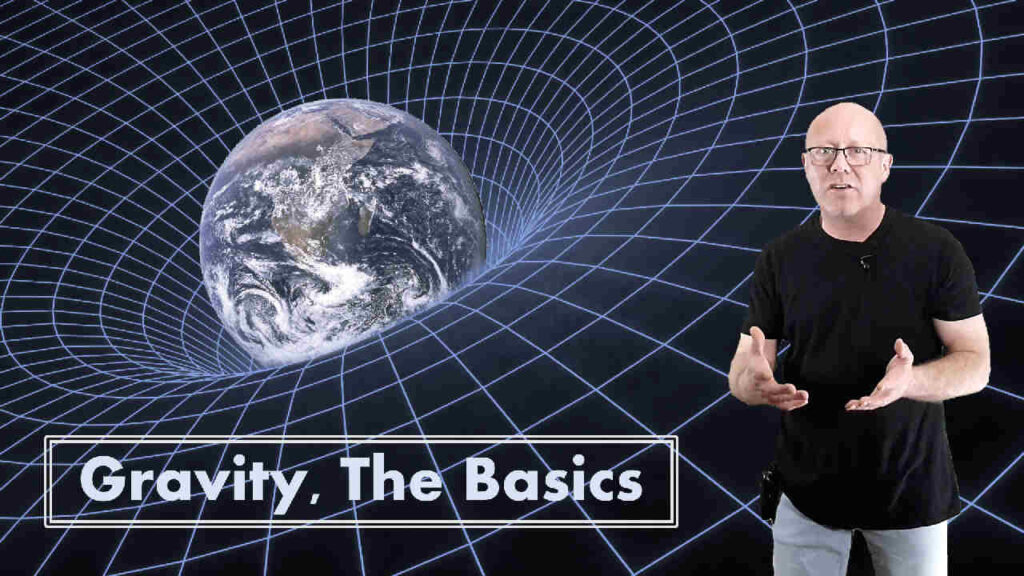Make your understanding of Newtonian Gravity skyrocket!
Are you struggling to solve problems or questions that involve motion and gravity?
Do you wish to understand linear motion, gravitational fields, circular motion, orbital motion and Kepler’s 3rd law?
Well, this course is just what you need!

Structure of the course
“Gravity, The Basics” is structured in 6 sections.
All sections contain lessons, applied examples, exercises with detailed correction, fun science facts and anecdotes, and many tips and tricks on how to approach questions in Physics. The last section is a little different: it is composed of a general summary and the Gravity Quiz!
Section 1, “Linear Motion”
This section presents a step-by-step technique to solve all linear motion problems when the acceleration is constant. This class is not essential for this course, yet the resolution technique presented is an extra “weapon” for students in feeling confident when facing a physics problem that involves motion.
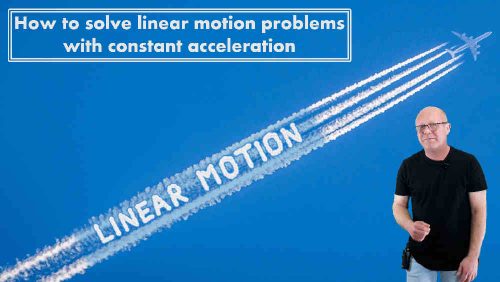
Section 2, “Newton’s Universal Law of Gravitation”
This notion is usually the first one about gravity that is taught to students. If you are familiar with this, and can solve direct application questions, you can also skip this section. If not, I strongly recommend you go through this section and the exercises before moving forward with the course: Indeed, this section can be seen as the doorway to the deeper dive that follows.

Section 3, “Gravitational Fields”
This module is the core of this course. This section teaches first what is a field, and then dives into a detailed description of gravitational fields, gravitational field strength and gravitational field lines. It is packed with many exercises aimed at making students comfortable with these notions.
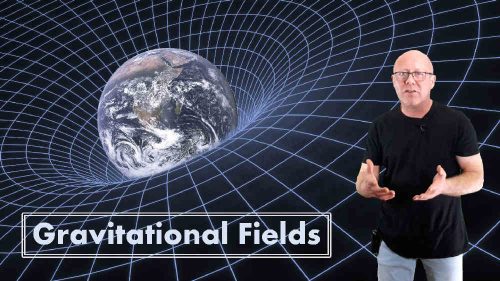
Section 4: “Circular Motion”
This section prepares for the section on orbital motion. You are presented with a detailed explanation of fundamental quantities that occur in circular motion (angles, angular velocity, centripetal acceleration and forces). As for section 1, the information provided in this section applies to many other areas of Physics (mechanics, electricity, magnetism, atomic, nuclear and particle physics. Note that section 4 can also be taken independently from the course.
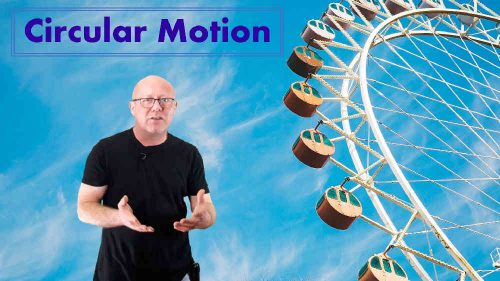
Section 5, “Orbital Motion”
This module discusses the motion of bodies in circular orbits around a massive object: It blends blends notions taught in section 3 (gravitational fields) with notions presented in section 4 (circular motion). You will get here a good grasp of what is an orbit, and learn how to manipulate easily orbital motion concepts, like Kepler’s 3rd Law.

Section 6: “Wrapping-up and Gravity Quiz”
You have viewed all 5 sections, and worked on the exercises? Then, it is time for the exam! After a 5-minute summary of all notions presented in “Gravity, The Basics”, 12 exam-like questions are presented and corrected in detail.

What you will gain by taking this course
If you follow this class till the end, and carry out all the exercises diligently, you will gain more than just the ability to solve questions relative to Gravity.
By doing so, you will realize that Physics is actually pretty easy to handle: the patterns of thinking presented in this course are commonly used in many areas of physics, and you will find them very useful to you in your studies of Physics in general.

Level of this course
This course is suited for end high school students studying Physics (from grade 10 to 12). The content of this course complies with Chapter 6 of the IB Physics Program and Topics 6.2 and 11 of the A-Level Curriculum.
It contains many exercises in all sections as well as exam inspired questions (especially section 6). This makes this course a very valuable tool for preparing any upcoming physics exam that may have questions related to gravity.
This course is also suited as a refresher for early university students and engineers that wish to solidify the basics. and of course, any person interested in physics and how the world works will also enjoy the voyage: I often invite you with me on exploration beyond the academic…
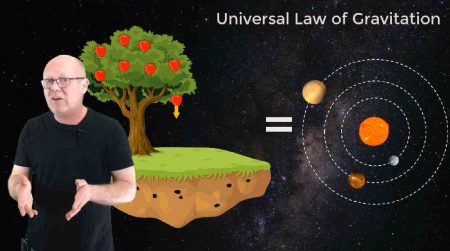
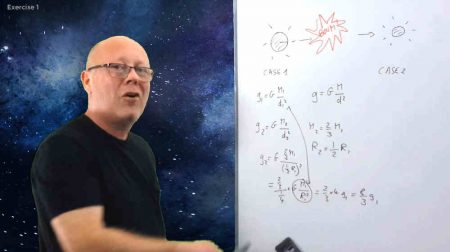
Detailed content
Section 1: Linear Motion
- Episode 1: Introduction (Linear Motion)
- Episode 2: Step by step technique to solve Linear Motion problems
- Episode 3: Deriving Motion Equations
- Episode 4: Linear Motion Exercises 1 & 2
- Episode 5: Linear Motion Exercises 3 & 4
Section 2: Newton’s Universal Law of Gravitation
- Episode 6: Introduction (Universal Law of Gravitation)
- Episode 7: Newton’s Universal Law of Gravitation – The lesson
- Episode 8: Training Exercises 1 & 2 (Universal Law of Gravitation)
- Episode 9: Training Exercises 3 & 4 (Universal Law of Gravitation)
Section 3: Gravitational Fields
- Episode 10: Introduction (Gravitational Fields)
- Episode 11: What is a Field ?
- Episode 12: Gravitational Fields – Lesson Video
- Episode 13: Training Exercises 1 & 2 (Gravitational Fields)
- Episode 14: Training Exercises 3, 4 & 5 (Gravitational Fields)
- Episode 15: Gravitational Fields are Vector Fields – Lesson Video
- Episode 16: Training Exercises 1 & 2 (G. Fields as Vector Fields)
- Episode 17: Training Exercise 3 (G. Fields as Vector Fields)
- Episode 18: Gravitational Field Lines – Lesson Video
Section 4: Circular Motion
- Episode 19: Introduction (Circular Motion) + What is an angle
- Episode 20: Angular Velocity
- Episode 21: Centripetal Acceleration
- Episode 22: Centripetal Force
- Episode 23: Application Example
- Episode 24: Exercise 1 (Circular Motion)
- Episode 25: Exercise 2 (Circular Motion)
- Episode 26: Exercise 3 (Circular Motion)
- Episode 27: Exercise 4 (Circular Motion)
Section 5: Orbital Motion
- Episode 28: Introduction (Orbital Motion)
- Episode 29: Orbital Motion (Lesson Video)
- Episode 30: Exercise 1 (Orbital Motion)
- Episode 31: Exercise 2 (Orbital Motion)
- Episode 32: Exercise 3 (Orbital Motion)
- Episode 33: The 3rd Law of Kepler (Lesson Video)
- Episode 34: Exercise 1 (Kepler’s 3rd Law)
- Episode 35: Exercise 2 (Kepler’s 3rd Law)
- Episode 36: Creating a graphic animation using Kepler’s 3rd Law (Bonus Video)
Section 6: The Gravity Quizz
- Episode 37: Gravity, The Basics: Summary of important concepts.
- Episode 38: How to take the quiz
- Episode 39: Question1
- Episode 40: Question 2
- Episode 41: Question 3
- Episode 42: Question 4
- Episode 43: Question 5
- Episode 44: Question 6
- Episode 45: Question 7
- Episode 46: Question 8
- Episode 47: Question 9
- Episode 48: Question 10
- Episode 49: Question 11
- Episode 50: Question 12

